
Methods for Eliminating Moldy Odor from Carpets
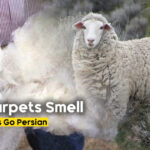
Why Do Some Handwoven Carpets Smell Like Sheep?
Persian Masterpiece: Shah Abbasi Carpets Unveiled
The design and pattern of Iranian carpets have an infinite world. The creativity and artistry employed in designing and weaving rugs in Iran speak a universal language. The Shah Abbas carpet is an unparalleled masterpiece encompassing various patterns. In the past, it was rare to find an Iranian home where the rooms were not adorned with these beautiful carpets. Even today, the word “carpet” first brings to mind such intricate designs for many Iranians, and the Shah Abbas carpet remains a top choice.
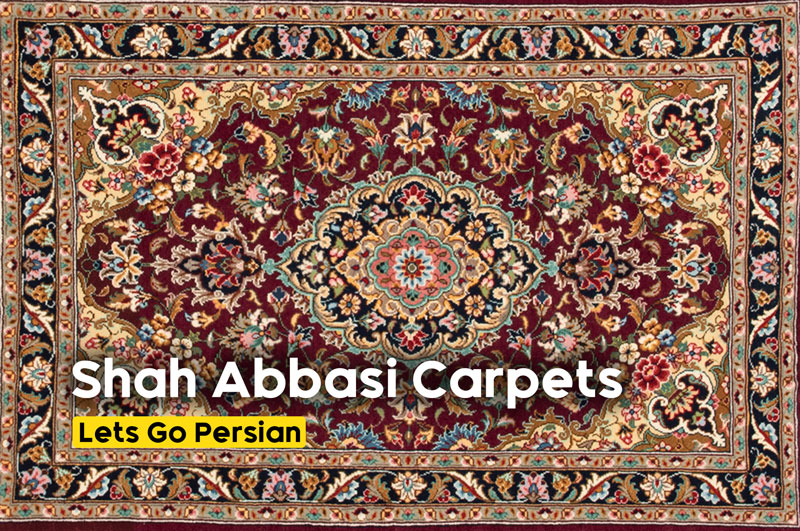
The Shah Abbas carpet was first woven during the Safavid era in Isfahan under the reign of Shah Abbas. For this reason, this pattern is named after Shah Abbas. To distinguish the Shah Abbas carpet from others, attention must be paid to its main characteristics. While various geometric and Islamic patterns are part of its design, the famous Shah Abbas flower is essential. This unique and beautiful flower is used in all patterns of this carpet. Here, we will first introduce the Shah Abbas flower in detail and then explore the various patterns and colors used in the Shah Abbas carpet.
Shah Abbasi Flower
The Shah Abbas flower is one of the Islamic patterns and can be considered the most fundamental and striking among them. Islamic patterns are based on the shapes and forms of natural plants. All the leaves and petals seen in Islamic practices are derived from the components of plants. In essence, these patterns are simplified and abstracted versions of these plants.
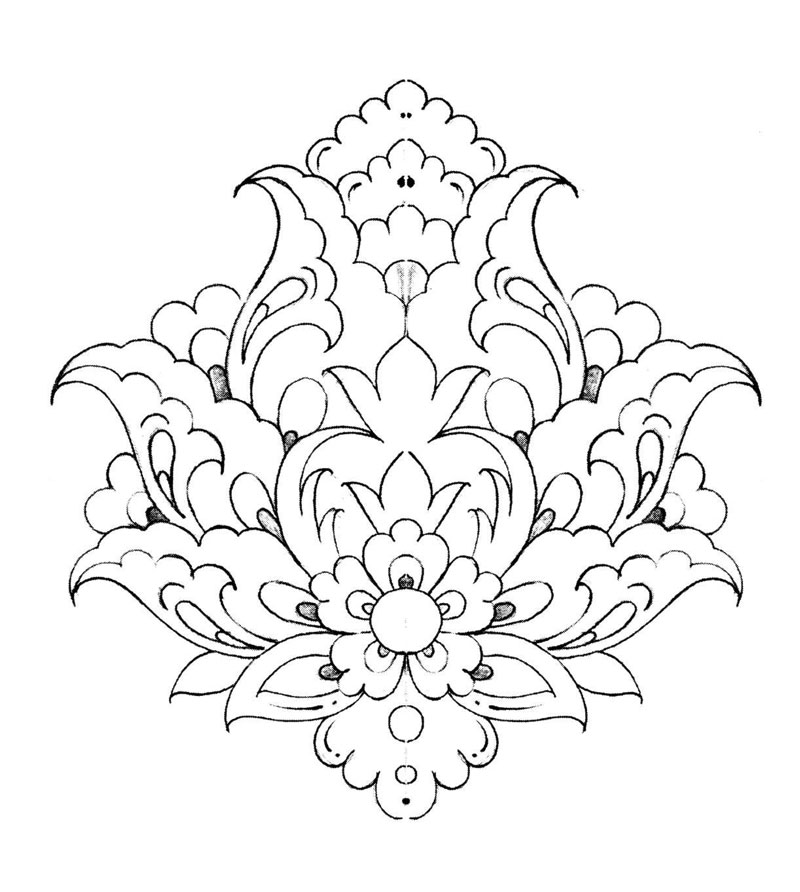
Shah Abbasi Flower
The Shah Abbas flower, in particular, is derived from the blue water lily or lotus flower. If a blue water lily is precisely cut lengthwise from its center and divided into two perfectly equal halves, the shape of the Shah Abbas flower becomes apparent. The Shah Abbas flower is designed in a circular motif, and all its elements are drawn in a mirror-like and symmetrical fashion.
It is worth mentioning that the Shah Abbas flower pattern existed even before the era of Shah Abbas and the Safavid dynasty. This flower can also be seen on artifacts remaining from the Sassanians. Examining historical works reveals that special attention was given to the blue water lily in the Mithraic and later Zoroastrian ceremonies.
At that time, it was believed that the goddess Mithra had emerged from within the blue water lily. In Shah Abbas flowers, two leaves are called “fish leaves.” These are essentially two fish revolving around the blue water lily. The fish leaves are the most historical evidence of the Shah Abbas flower’s connection to the water lily. As the lotus flower is associated with water and sunlight, this flower symbolizes the complete and enlightened human.
Types of Shah Abbas Carpet Patterns
Afshan Shah Abbas: The combination used in the domes of the Goharshad Mosque in Mashhad can be considered the beginning of Afshan Shah Abbas patterns in Khorasan. The Afshan design evokes a garden of flowers in the viewer’s mind. The Afshan pattern lacks the central medallion and the usual corner brackets found in carpets. Instead, the entire carpet’s background is filled with Islamic and geometric patterns. Wide and narrow borders surround these patterns.
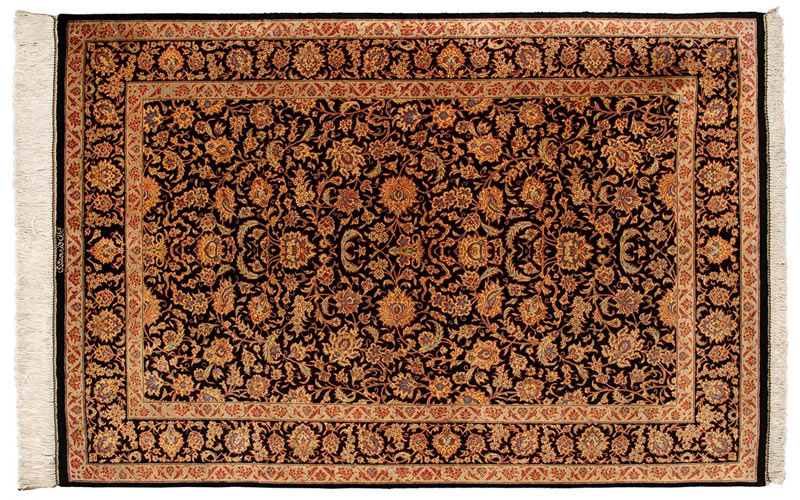
Afshan Shah Abbas
Throughout the carpet’s surface, Shah Abbas flowers of various sizes and other patterns, such as branches and animals, are connected using curved and circular lines. These lines are essentially intertwined and entangled branches. Afshan Shah Abbas patterns in some parts of the carpet, from the center outward, are mirrored and repeated. In this way, a balanced and harmonious beauty is created in the carpet’s background. Afshan patterns include Afshan Khotayi, Afshan Shakaste, and Afshan Shakh-e Pich.
Shah Abbas Animal Pattern: In the center of a carpet with the Shah Abbas animal pattern, Shah Abbas flowers and Islamic patterns are woven. Surrounding these flowers are borders and motifs full of various animal figures. Deer, wolves, lions, and gazelles are animals whose designs are used in these carpets. These animals, amidst intertwined Islamic branches, are in motion. Animal patterns that are delicately and artistically intertwined around the Shah Abbas flowers surround the central part of the carpet. This pattern is prevalent in Qom and Kerman.
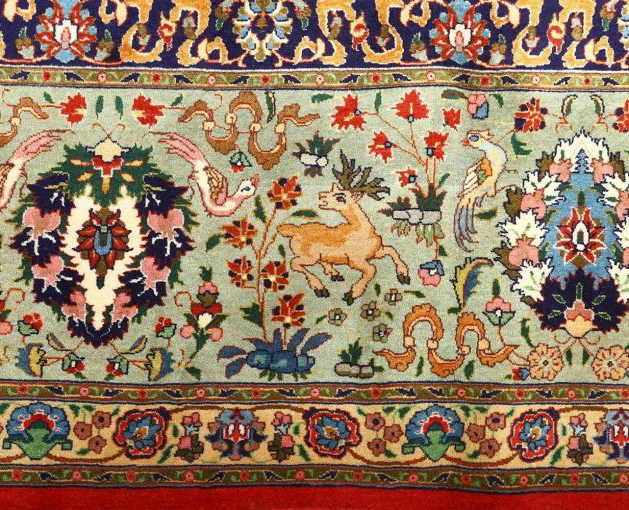
Shah Abbas Animal Pattern
Shah Abbas Lachak and Toranj: Toranj, a circular, oval, or ribbon-like pattern, is woven in the center of the carpet. Lachak refers to four identical ways that decorate the four corners of the rug. Each of the Blackhawks is one-fourth of the central Toranj. The Lachak and Toranj Shah Abbas pattern, the Toranj and the four lachaks are filled with Shah Abbas flowers and Islamic practices. The space between Toranj and lachaks is also adorned with intertwining branches, Islamic dragon-like motifs, palm leaf-like leaves, and Shah Abbas flowers.
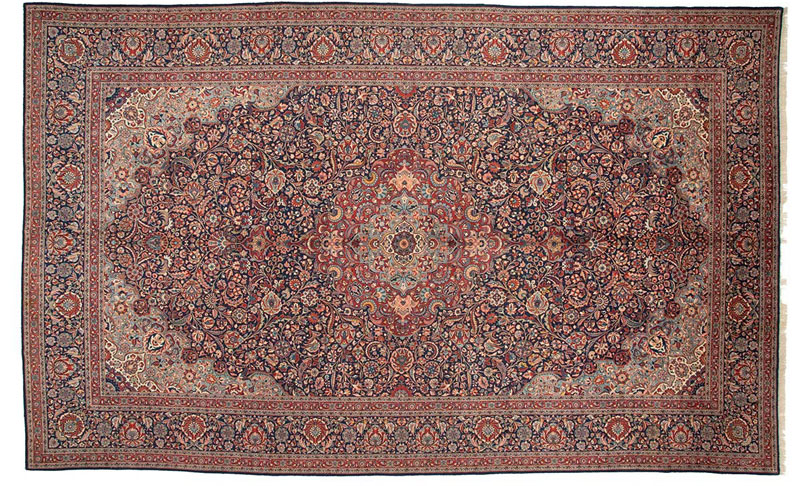
Shah Abbas Lachak and Toranj
The Shah Abbasi with Torreh(curly) Pattern
It can be said that this design resembles the Lachak and Torang (medallion and corner) pattern. However, the difference lies in the fact that in the Shah Abbasi with Torreh (curly) carpet, there are no four medallions in the corners; instead, the medallion is covered with a curly pattern around the field. Therefore, the Shah Abbasi with Torreh carpet can be described as follows: wide and narrow borders are woven around the area, as is customary in most rugs. After the walls, a curly pattern is observed, encircling the entire central motif. In the center of the carpet is an elegant medallion, and the space between the medal and the curly way is filled with leaves and flowers of Shah Abbasi and Islamic practices.

The Shah Abbasi with Torreh
Sheikh Safi Shah Abbasi Carpet
The famous carpet of the mausoleum of Sheikh Safi al-Din Ardabili inspires the design of these carpets. In the Sheikh Safi pattern, watermelon flowers, as they are called, are used. These flowers surround the central medallion. They are also used to decorate the four-cornered lachaks. The border of the Sheikh Safi carpet is formed by unique frames and inscriptions that are placed like a door in the middle and surround the flowers.
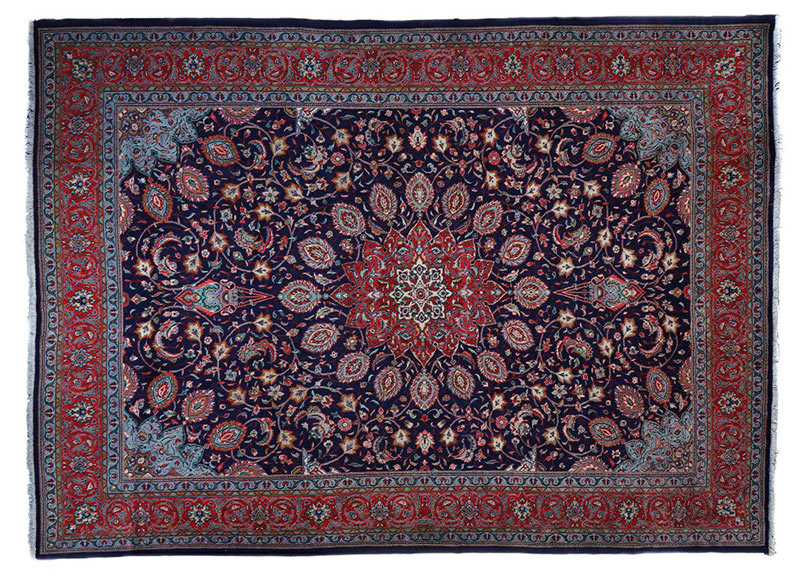
Sheikh Safi Shah Abbasi Carpet
It should be noted that carpet designers have always made interventions and innovations in the overall structure of the pattern and text of these carpets. For example, sometimes, they eliminate the lachaks or use decorative inscriptions and frames on the side edges. These innovative patterns are called “Shah Abbasi Tassavvori” (appropriative).
Colors of Shah Abbasi Carpet
In Shah Abbasi carpets, various colors are used, incredibly bright and lively colors. The presence of so many attractive Khotayi and Islamic patterns of flowers, leaves, animals, and twists and turns necessitates using beautiful colors in these carpets. Therefore, finding a Shah Abbasi carpet with fewer than four colors is almost impossible.
In general, lacquer, light brown, and pea green colors are usually used for the background of these carpets, and navy blue and brick red colors are used in the borders of Shah Abbasi carpets. Other colors used in Shah Abbasi carpets include crimson, indigo, turquoise, green, blue, beige, and cream.



















